
The game of cricket has a long history and has undergone much change from its early years.
Bowling, for example, used to be performed underarm. It is believed that the shift to overarm began in the early 19th century when Christina Willes bowled an overarm delivery to her brother, and first-class cricketer, John Willes.
Christina Willes is believed to have adopted this technique because the voluminous skirts that were fashionable at the time made underarm bowling difficult. John took notice of his sister's unorthodox technique and trialled in a first-class game at Lord's. However, the umpire no-balled this delivery, and John stormed off the field, hopped on his horse, and rode away.
The game has clearly undergone many changes since then. Even the last few decades have seen dramatic shifts in the game. What constitutes a good total in a one day match, for example, has fluctuated greatly, and the 15-degree rule has enabled bowlers with more unorthodox techniques to thrive.
Players are no longer the same either. The portly W.G. Grace may have played a ridiculous 870 first-class games in his day, but in the modern game, his fitness would likely render his talent moot.
It is largely because of these changes that some of the game's records are almost certain to stand the test of time. It is unlikely Test cricket will see an older cricketer than Wilfred Rhodes, who was 52 at the time of his last appearance. Nor is it likely that any bowler will surpass George Lohmann's bowling average of just 10.76, as he had the advantage of bowling on matted pitches against often weak opposition.
However, there are some cases where it is actually surprising the record has not been beaten. This may simply be down to chance, or because cricket has evolved to a point where the game is more heavily weighted towards records being set.
This article looks at records such as these, those which are vulnerable and may not last for much longer.
However, T20I are not considered, as with only a little over a decade of history, many T20I are still very likely to change in the near future.
#1. Highest Successful Run Chase in Tests (Currently held by the West Indies, with 7/418)
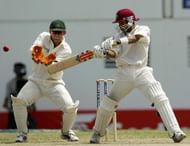
It is fact worth establishing that the West Indies epic chase in Antigua is worthy of great praise. Centuries to Ramnaresh Sarwan and Shivnarine Chanderpaul ensured the West Indies reached the unlikely target against an Australian bowling line-up that included Glenn McGrath, Jason Gillespie, Brett Lee and Stuart MacGill.
However, even though it is a fairly recent record, having been set in 2003, it is somewhat surprising it is yet to be bettered.
Firstly, the chase is one of three successful run chases where the victorious team needed over 400 to win and lost more than five wickets in the process. In the other two of these successful chases, the batting side only lost three or four wickets, suggesting that on each occasion they could have made far larger scores.
There have also been several occasions when the West Indies record was nearly beaten. The most recent example is when Pakistan were all out for 450, chasing 490 for victory against Australia.
But there have also been many higher fourth innings scores than the West Indies 418.
The largest, by some margin too, is England's 5/654 in the "Timeless Test" against South Africa. This 10-day affair ended in a draw, with England just 42 runs from victory. Had they managed the feat, it would have likely been a record that would never be beaten, as five-day games simply don't allow for such matches to take place.
But despite the extraordinary circumstances that led to this game, it is one of just nine fourth innings scores that are higher than the West Indies 418. It is simply that none of these were winning scores.
However, the record is unlikely to last long. Pitches are more consistently favouring the batsman nowadays. Pakistan's score of 450 took place on a drop-in wicket on Brisbane, where the pitch's preparation means it deteriorates less, and that batting fourth is subsequently not the disadvantage it once was.
#2. Highest Innings by a No. 11 (Currently held by Ashton Agar with 98)
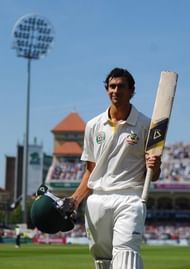
A major development in modern cricket has been the improvement of bowlers ability with the bat. Players are now expected to carry a much wider skill set than before, as it was once commonplace to see big pace bowlers who were inept in the field and with the bat.
Even some of the game's greats were terrible batsmen. Glenn McGrath, Courtney Walsh, Lance Gibbs and Monty Panesar all averaged comfortably below ten with the bat. Then there is, of course, Chris Martin who averaged just 2.37 over 104 innings.
Apart from Gibbs, all these players are fairly recent examples. However, the current generation of cricketers sees fewer players of this type.
Trent Boult, for example, currently averages 14.97 in the innings he has played at number 11, while Nathan Lyon also averages 14.90 in that position. Both are also accomplished fielders, ensuring that their bowling is not their only benefit to the team.
If these players have been influenced by the demands of modern cricket, then Ashton Agar is the epitome of modern cricketer. He is a natural athlete, primarily a bowler, but an allrounder in his own right. He has two first-class hundreds to his name and is also a superb fielder.
His 98 on debut, where Australia made the bizarre selection of picking him above Nathan Lyon, was the closest a number 11 has gotten to making a century, with every other batting position has had multiple centurions.
Australia's decision to bat Agar at 11 was perhaps more indicative of the selectors' lack of knowledge of him as a player, rather than his ability with the bat, but he is not the only number 11 to come close to a century.
It was just over a year earlier, in 2012, that Tino Best blasted 95, also against England, while in 2014, James Anderson managed 81 against a strong Indian attack.
The fact that all these innings took place so recently emphasizes that this is a modern trend. It is therefore likely that Agar's record will soon be broken, and that before long Test cricket will have its first number 11 centurion.
#3. Fastest Test Century (Currently held by Brendan McCullum, in 54 balls)
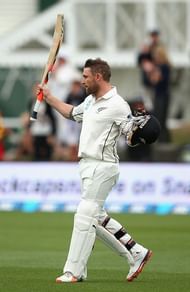
McCullum's 54 ball century was a fitting end to his career. He helped transform New Zealand into one of the most attacking teams in international cricket, often leading the way with his aggressive batting style.
McCullum's innings also broke Sir Vivian Richards 19-year-old record, as the West Indian batsman had previously reached the milestone in 56 balls. But it was perhaps strange it had taken so long for this record to be broken.
A bit over a year before McCullum's innings, Misbah-ul-Haq surprised many by equaling Richard's record. Adam Gilchrist also fell one ball short of the record in his onslaught at Perth in 2007.
Yet Gilchrist's innings highlighted why it was surprising that Richard's record had lasted for so long. This is because Gilchrist actually began his innings at a fairly leisurely pace. It seemed for his first few overs at the crease, Gilchrist was simply looking to see Michael Clarke to his hundred and wasn't aiming to be particularly aggressive. It was only after he'd faced a fair amount of deliveries that he truly went on the attack.
Furthermore, there are no fewer than 12 ODI hundreds that have been scored in fewer balls than century McCullum scored in his final Test.
AB de Villiers' 31 ball century leads the way there. He ended his innings on 149, having still faced 10 fewer deliveries than what it took McCullum to reach his century.
In fact, it was only McCullum's third fastest international hundred, as he had previously scored to T20I hundreds in fewer deliveries.
There is subsequently no doubt that there are players are capable of breaking this record, it is simply a case of when the right scenario arises for a player to release the shackles and find some success.
#4. Most Centuries in ODIs (Currently held by Sachin Tendulkar with 49 hundreds)
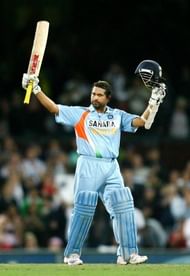
Sachin Tendulkar's record of 49 ODI hundreds is remarkable. When he retired from the game, Ricky Ponting was second to him with only 30.
This would suggest that Tendulkar's record would last for some time, except that Tendulkar lives in a world where Virat Kohli exists.
For all Kohli's remarkable skills, perhaps his most impressive is his ability to convert fifties into hundreds, particularly in ODIs. Kohli converts 44.19% of his ODI fifties into centuries. To put this in perspective, Tendulkar's conversion rate, while impressive, dwindles in comparison, at just 33.79%.
Kohli's ability to turn starts into hundreds means he already has 38 ODI centuries to his name, despite having played less than half the amount of ODIs Tendulkar has. It, therefore, seems inevitable that he will soon reach and then surpass Tendulkar's record.
Similarly, Kohli is just six centuries away from passing Ponting's record of most ODI centuries as captain. Ponting made 22 centuries in 230 games as captain, whereas Kohli incredibly has 16 in just 57 games.
Ponting and Tendulkar's records are formidable, but Kohli's ODI record is unparalleled.
#5. Most Runs Conceded by a Bowler in an ODI Match (Currently held by Mick Lewis, with 0/113 vs South Africa)
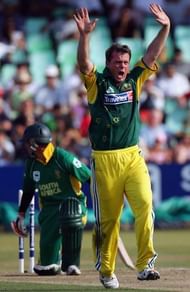
The 2006 ODI between Australia and South Africa at the New Wanderer's was an absurd affair that saw many records broken.
The game started with Australia smashing the record for the highest ODI innings, scoring 434 when no other team had previously made 400. However, South Africa showed the fighting spirit they had become known for, and charged back to win the match by a single wicket, therefore breaking Australia's record in the process.
Caught in the middle of this carnage was the hapless Mick Lewis. The ground had short boundaries, the South African side had plenty of firepowers, and Lewis had no answers. He particularly suffered at the hands of Herschelle Gibbs, who blitzed 175 in just 111 deliveries.
However, this game was ahead of its time, and since then scores of 400 have become far more common. There have now been 19 occasions where a team has scored 400 or more in an innings, with England recently breaking the record with 6/481, also against Australia.
Players have learnt to exploit flat pitches and small grounds, as the two highest innings both took place at Trent Bridge, while the New Wanderer's stadium also played home to South Africa 2/439, where AB de Villiers scored a 44 ball 149.
Unsurprisingly, bowlers have also begun to suffer more, as there are now 12 separate occasions where a bowler has conceded 100 or more runs in an innings. It is also worth noting that four of the bowlers on this list only bowled nine overs, whereas Lewis bowled his full quota of 10.
Another point worth noting is that even the great Muttiah Muralitharan once ended with the figures of 0/99, so it doesn't take a bad bowler to have a dreadful day.
Nevertheless, Lewis will probably be quite thankful when someone takes the record off his hands.
Follow IPL Auction 2025 Live Updates, News & Biddings at Sportskeeda. Get the fastest updates on Mega-Auction and cricket news
